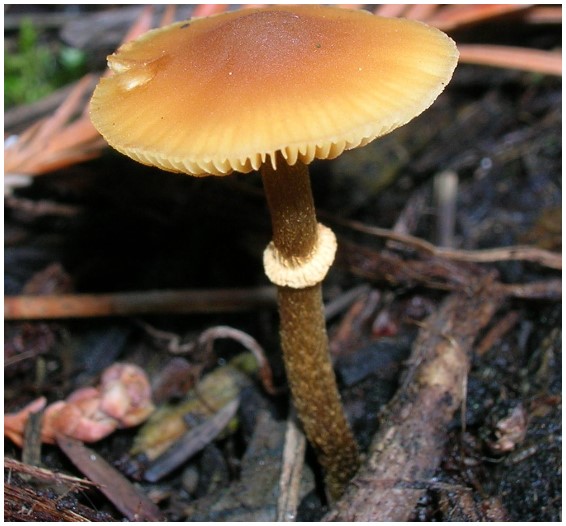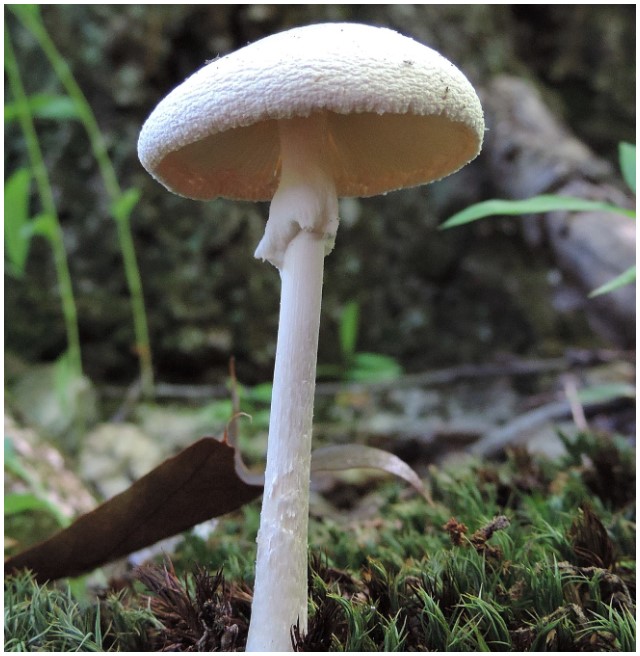Thre are many Mushrooms that are able to kille humans and other animals if any comsume that. According to ScienceDirect 51 families of mushrooms contain 643 poisonous species. However, only about 100 of the 100,000 known fungi species are poisonous to humans, and most mushroom poisonings are not fatal.
Here are the Most Poisonous mushrooms in the world.
Amanita phalloides (Death Cap)
The most Poisinous fungi of the world, the death cap thrives across Europe and bears a striking resemblance to edible straw mushrooms and Caesar’s mushrooms. Its heat-resistant amatoxins endure cooking temperatures and swiftly wreak havoc on cells throughout the body. Within 6 to 12 hours post-ingestion, victims experience agonizing abdominal pain, projectile vomiting, and bloody diarrhea, resulting in rapid fluid loss from the tissues and insatiable thirst.

Symptoms of severe liver, kidney, and central nervous system damage manifest shortly thereafter, including diminished urine output and plummeting blood sugar levels. This progression often culminates in coma and death, claiming the lives of over 50 percent of those affected. Notable fatalities linked to death cap poisoning include Pope Clement VII, who succumbed to accidental ingestion in 1534, and potentially Roman Emperor Claudius in 54 CE.
Conocybe filaris
Conocybe filaris is an innocent-looking lawn mushroom that is especially common in the Pacific Northwest. Featuring the same mycotoxins as the death cap mushroom, C. filaris is potentially fatal if eaten. The onset of gastrointestinal symptoms often occurs 6-24 hours after the mushrooms were consumed, frequently leading to an initial misdiagnosis of food poisoning or the stomach flu. The patient may appear to recover, only to suffer from a life-threatening reappearance of the gastrointestinal distress, coupled with liver and kidney failure.

Webcaps (Cortinarius species)
The two species of webcap, the deadly webcap (Cortinarius rubellus) and the fool’s webcap (Cortinarius orellanus), are very similar in appearance to both each other and to a number of edible varieties. These mushrooms feature a poison known as orellanin, which initially causes symptoms similar to the common flu. Orellanin has an insidiously long latency period and may take 2 days to 3 weeks to cause symptoms, often leading to a misdiagnosis.

The toxin ultimately causes kidney failure and death if left untreated. In 2008, English author Nicholas Evans mistakenly collected. And it served webcap mushrooms to his relatives, resulting in hospitalization for four of them. He, his wife, and his brother-in-law all required kidney transplants as a result of the poisoning.
Autumn Skullcap (Galerina marginata)
Widespread across the Northern Hemisphere and sections of Australia, Galerina marginata is a gilled fungus that thrives on decaying wood and shares the same lethal toxins as the notorious death cap mushroom. Consumption leads to symptoms such as diarrhea, vomiting, hypothermia, and liver impairment, potentially culminating in fatality without prompt medical intervention. Despite its dissimilarity to edible varieties, numerous fatalities and poisonings have occurred due to collectors confusing the autumn skullcap for hallucinogenic Psilocybe mushrooms.

Destroying Angels (Amanita species)
The destroying angels comprise various species of completely white mushrooms within the Amanita genus. These highly poisonous fungi bear a striking resemblance to edible button mushrooms and meadow mushrooms, leading to frequent accidental collections. Among them, Amanita bisporigera is recognized as the deadliest mushroom in North America. Symptoms typically manifest 5 to 24 hours after ingestion and encompass vomiting, delirium, convulsions, diarrhea, liver and kidney dysfunction, frequently resulting in fatality.

Deadly Dapperling (Lepiota brunneoincarnata)
The lethal dapperling is a gilled fungus notorious for its amatoxin content. Found extensively across Europe and portions of Asia, this mushroom bears a relatively harmless appearance. And it has often been confused for edible counterparts, although poisonings are infrequent. Ingestion by mistake results in profound liver toxicity and may prove fatal without prompt medical intervention.

If you have other details about this topic please contact us in sharpinn.com. If you have found any suspecious mushrooms inside your garden, please make sure it, wouldn’t be poisonous before touch.

